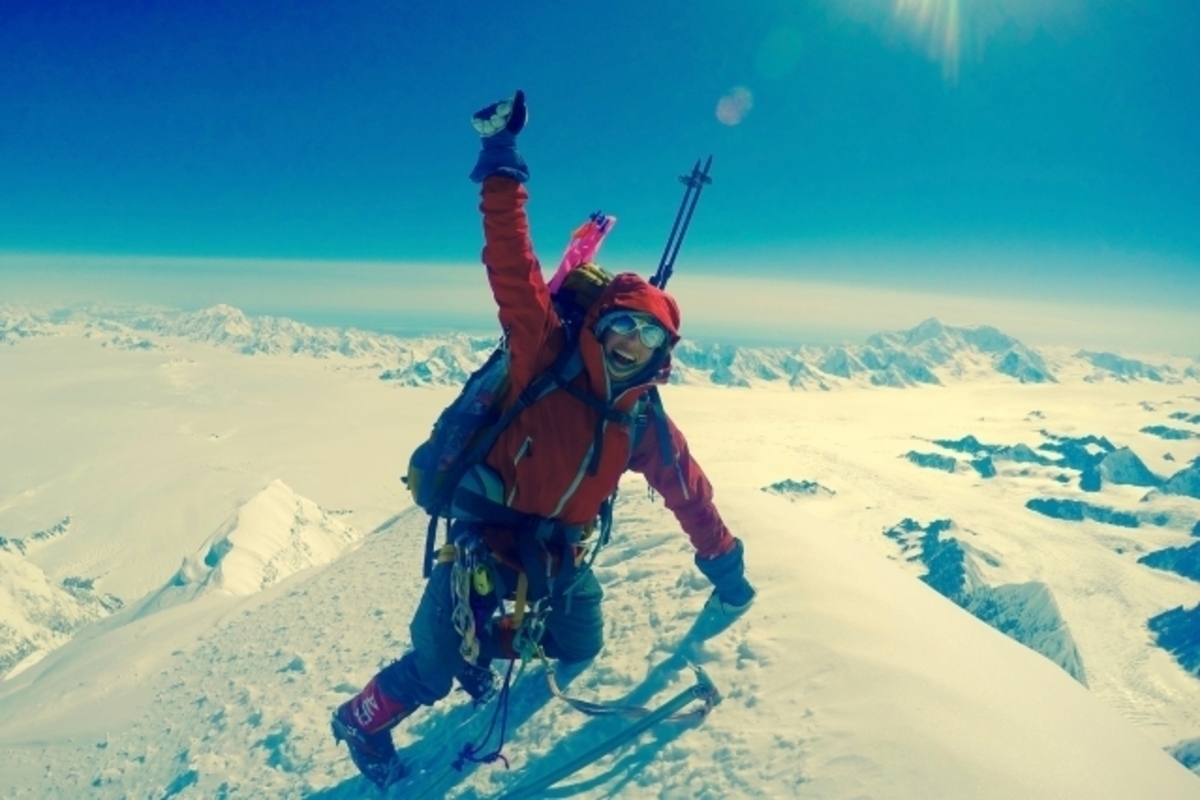PAOC Spotlights
For the Love of Ice: Journeys to the Remote and Inhospitable

Alison Criscitiello PhD '14 seeks ice cores in inhospitable locations, sometimes camping on ice sheets and sleeping with a shotgun in case of bear attacks.
Ice has always been fascinating to Alison Criscitiello PhD '14.
“I had a science teacher who did a short unit on glaciers … I couldn’t believe they were real,” she says. That classroom encounter when she was in eight grade in Winchester, Massachusetts, had a lasting impact.
Criscitiello went on to earn MIT’s first PhD in glaciology, and now she is an adjunct assistant professor of glaciology at the University of Calgary in Canada. She studies the history of sea ice and polar marine environments, primarily by drilling ice cores on land-based ice sheets and ice caps in both the Arctic and Antarctic. In March, Criscitiello became the technical director of the newly-created Canadian Ice Core Archive at the University of Alberta, where scientists will have access to 1.7 kilometers of core samples.
“The very northernmost reaches of the Canadian High Arctic are incredibly understudied and undersampled,” says Criscitiello. To reach remote sites, she often must take several small prop plane flights and then ski in to the destination. On trips to such places as West Antarctica and Greenland, she has had to camp on ice sheets; in Greenland, she’s even slept with a shotgun in case of polar bear attacks.
In a 2014 Lady Paragons Women in STEM podcast, Criscitiello said she does not mind the hardships: “For me, there is really nothing else in the world that compares to that feeling of being somewhere incredibly remote and frozen, even if it’s inhospitable.”
Her 40-day winter ski traverse with Rebecca Haspel and Kate Harris SM ’10 through the Pamir Mountains of Central Asia in 2015 is the subject of the new documentary "Borderski." In it, the women travel along Tajikistan’s border with Kyrgyzstan, China, and Afghanistan to bring attention to conservation of the area’s migratory wildlife. The three reunited this winter to bike a 1,450-kilometer ice road that connects remote communities in northern Canada.
Criscitiello has also led the first all-women’s summit of Pinnacle Peak in the Indian Himalayas. Recent expeditions have included summiting Mount Logan, Canada’s highest peak, and the first all-female ascents of mixed routes off Alaska’s Pika Glacier.
In 2016, Criscitiello cofounded Girls on Ice Canada, a nonprofit wilderness and science education program that gives First Nations girls free opportunities to experience scientific mountain expeditions. In her free time, she blows glass and plays the mandolin.
Why the mandolin? “It’s very portable,” she says, “and I can take it on trips.”
This article originally appeared in the July/August 2017 issue of MIT Technology Review magazine. Read this story at MIT News.